Published Nov 8, 2024
Tales from the Science Station
As we celebrate National STEM Day, take a look at some of Starfleet's stellar scientists.
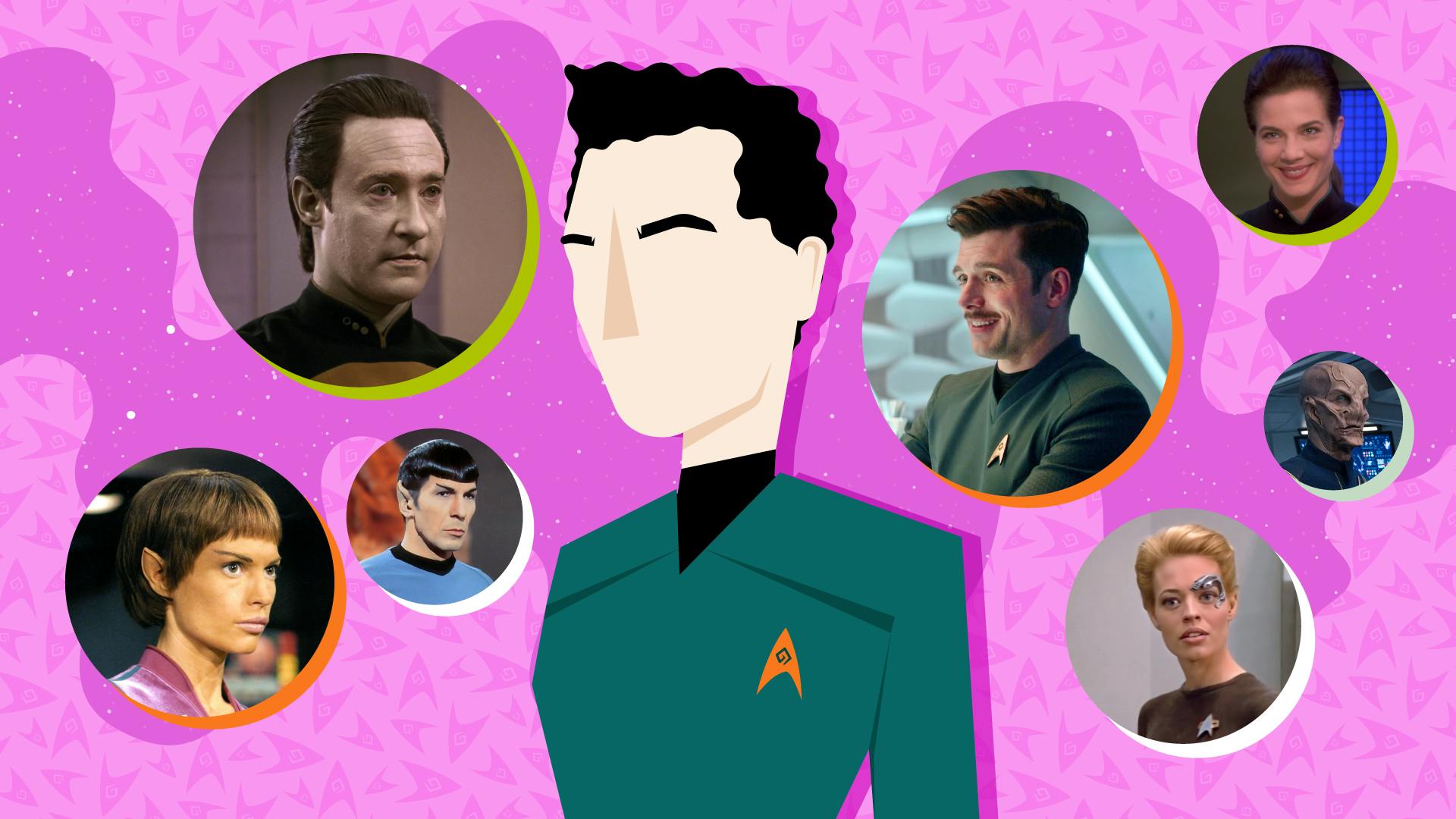
StarTrek.com
Starfleet's pursuit of knowledge and scientific discovery meant that the majority of its personnel were scientists at heart, regardless of their specific career path. Yet the officers in the science division, ranging from junior officers to their senior-most counterparts, dedicated themselves to the study of the universe around them above all else.
Some science officers, such as Kathryn Janeway, went on to reach the captain's chair, while others were lost before we saw them fulfill their true potential (we're looking at you, Sonak).
With this in mind, let's journey back and reacquaint ourselves with some of the stellar Starfleet scientists who we've been introduced to over the years.
T'Pol, Star Trek: Enterprise

"Zero Hour"
StarTrek.com
Initially acting as the NX-01's science officer while on temporary assignment for the Vulcan High Command, T'Pol established a rapport with Captain Archer and Enterprise's crew which made her opt to make her Starfleet association official. In addition to bridging the gap between humans and Vulcans, T'Pol harnessed her scientific expertise to accomplish incredible feats, the list of which includes her involvement in cracking the case of how to destroy the Spheres that were altering the Delphic Expanse.
Enterprise's promise to disable this network played a significant role in convincing the to ally with Archer's ship and prevent Earth's destruction, and T'Pol's dedication to her craft helped turn the notion of foiling the Sphere Builders from a theory into reality in "."
Saru, Star Trek: Discovery
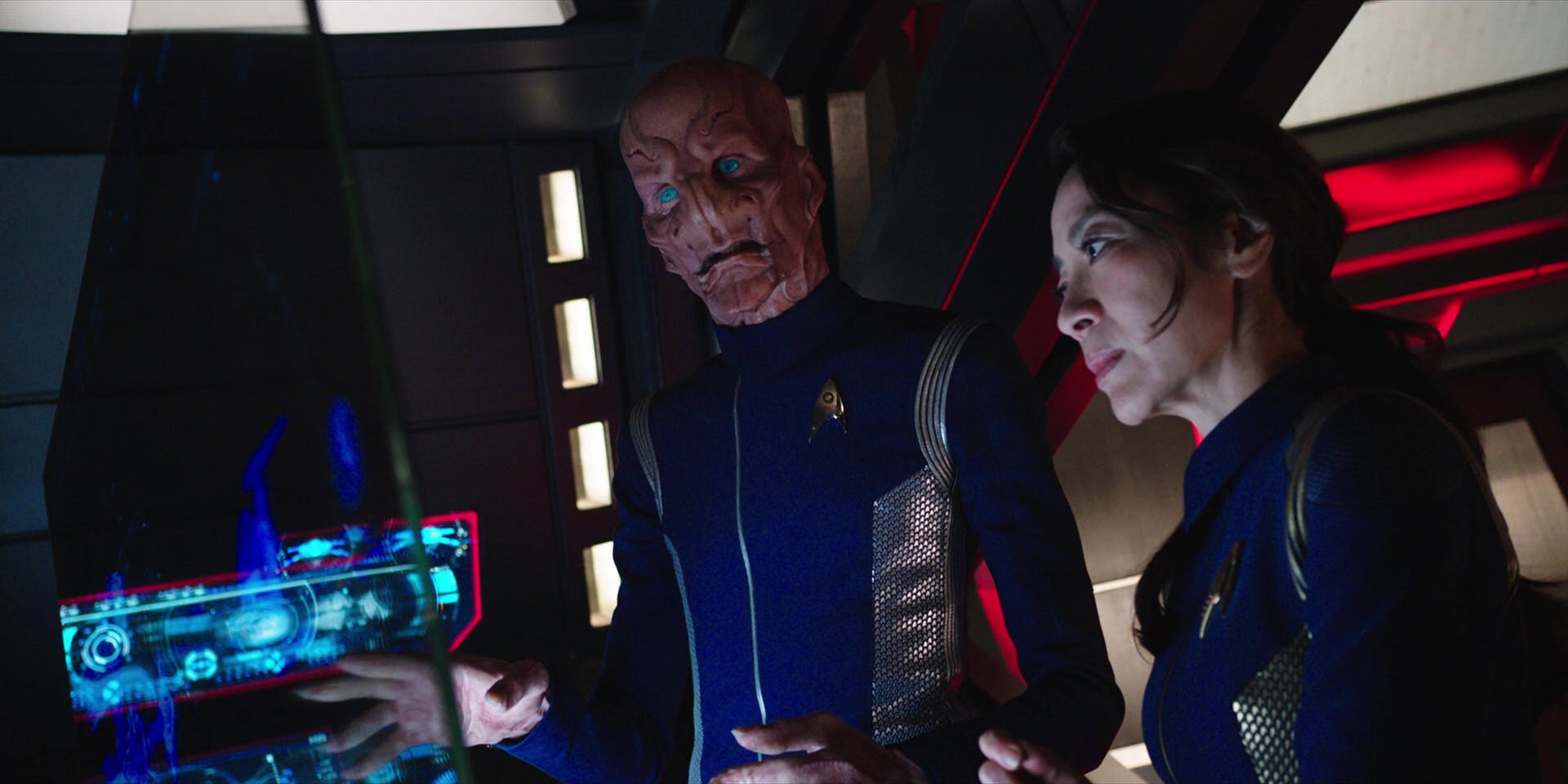
"Battle at the Binary Stars"
StarTrek.com
We first met Saru aboard the U.S.S. Shenzhou, where the Kelpien served as Captain Georgiou's science officer. Having not yet undergone his vahar'ai at that point Saru still relied upon his cautious demeanor — and his threat ganglia — to avoid falling victim to the dangers of the galaxy. It was Saru who detected the Klingon beacon — or, as he described it at the time, an object of unknown origin — that T'Kuvma used to call the Klingon houses to war.
Following the devastating battle which ensued in "Battle at the Binary Stars," Saru employed his scientific expertise to devise a tactical solution to the quandary of how to strike at the Klingon Ship of the Dead while the Shenzhou remained adrift. Saru suggested they place their photon torpedo warheads on an auxiliary craft and manually transport them over to the enemy. Though the proposal was further modified, Saru's idea proved vital in delivering a significant blow to the Klingon flagship.
Michael Burnham, Star Trek: Discovery
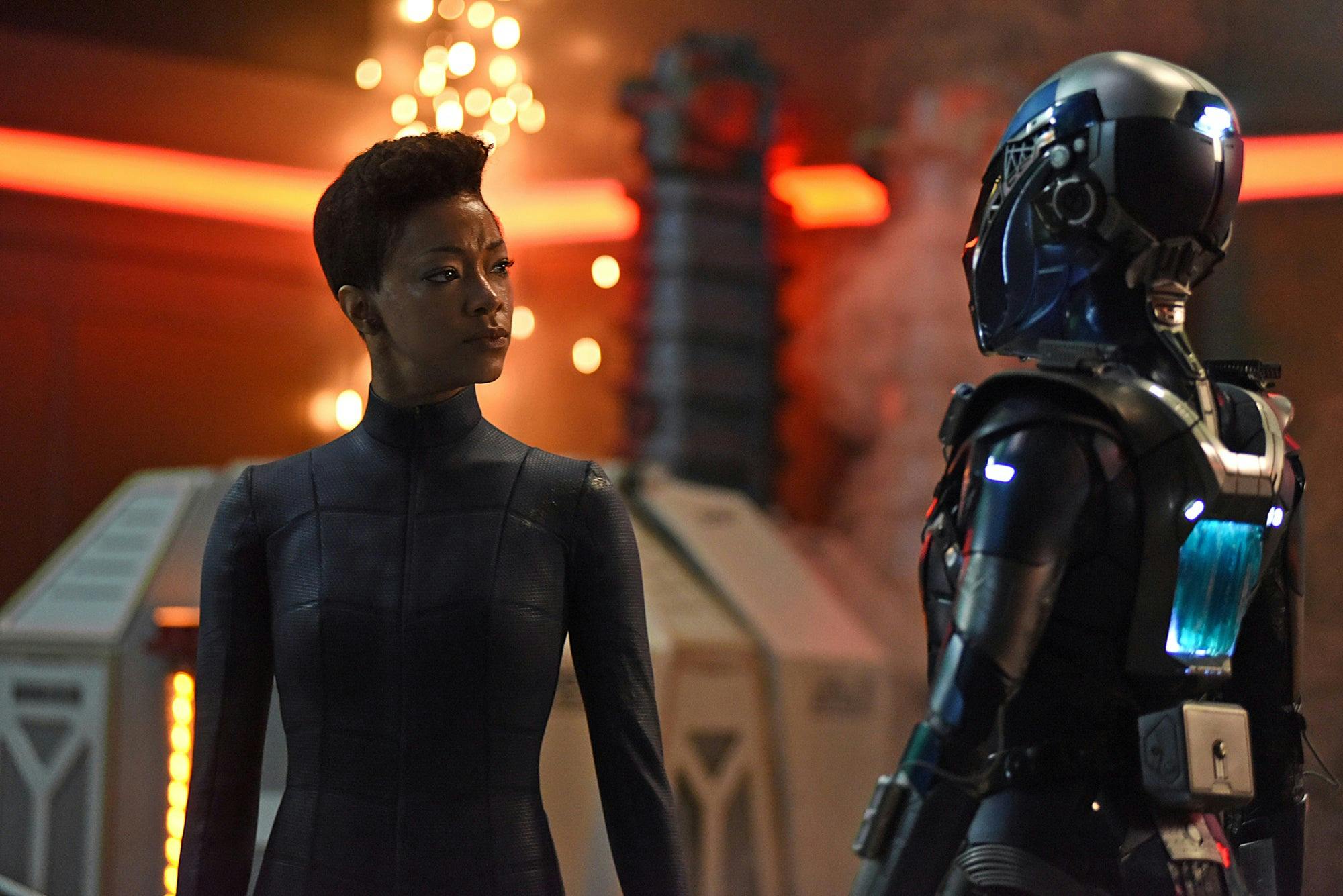
"Such Sweet Sorrow, Part 2"
StarTrek.com
The U.S.S. Discovery's status as a science vessel bestowed the ship with a wealth of science officers, and later seasons saw the incredible brain trust of Paul Stamets, Sylvia Tilly, and Adira Tal join together to solve a host of scientific and engineering challenges.
However, Discovery's greatest leap — a time jump of over 900 years — occurred during Michael Burnham's tenure as the ship's science officer. The inquiry into the mysterious red bursts which appeared throughout the galaxy supplied Burnham with an opportunity to showcase that scientists do far more than simply conduct laboratory research. Faced with the need to carry data from an ancient Sphere into the far future so as to keep it out of Control's grasp, Burnham bravely volunteered to don the Red Angel time suit and complete the mission herself. This heroic deed not only saved all sentient life from extinction in "," but also set in motion the chain of events which allowed Discovery to have .
Samuel "Sam” Kirk, Star Trek: Strange New Worlds
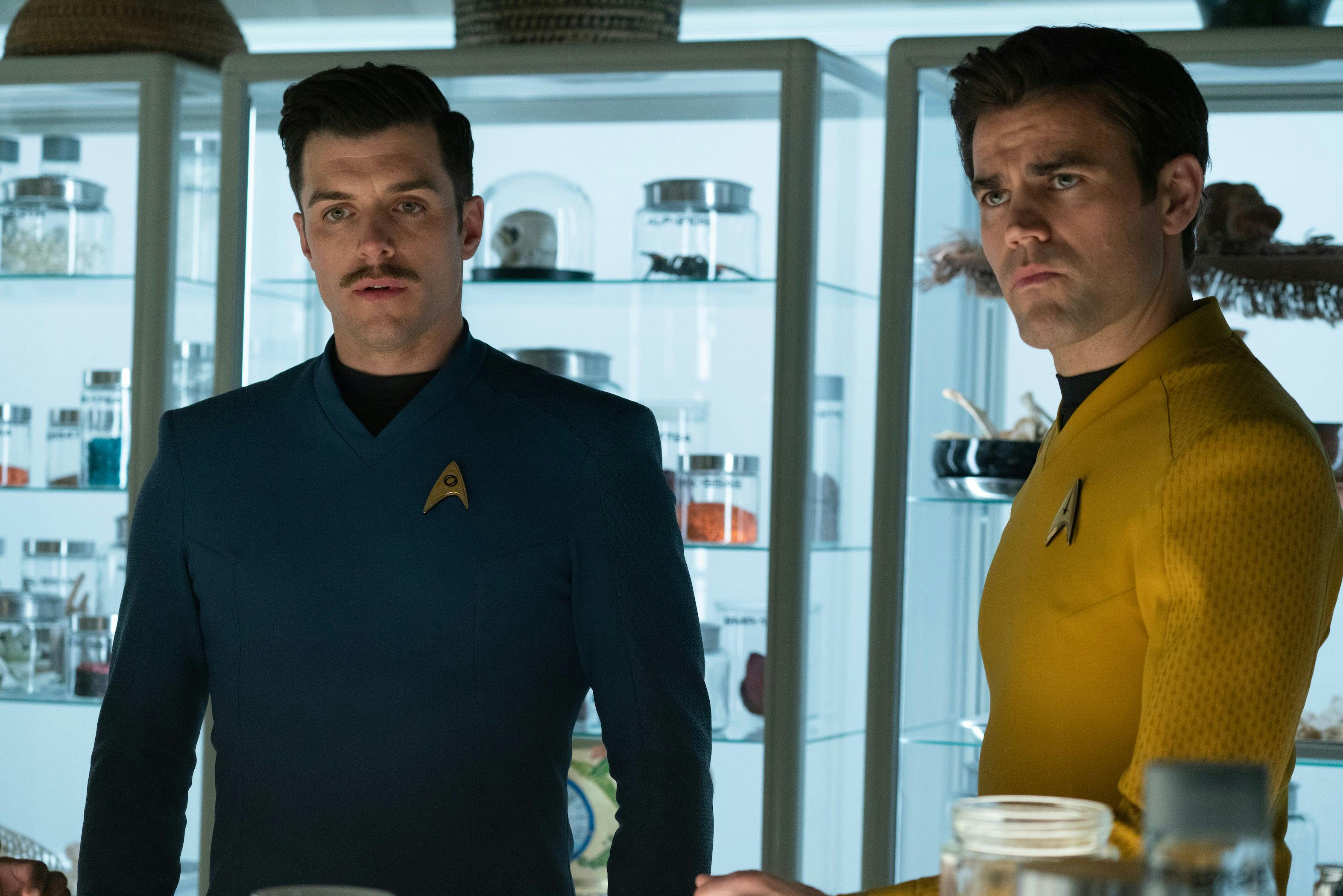
"Lost in Translation"
StarTrek.com
The brother of the legendary James T. Kirk, was a xenoanthropologist posted to the U.S.S. Enterprise's life sciences division. Subjected to confusing sounds and visions while visiting the Bannon Nebula in "," Nyota Uhura recruited James' assistance in getting to the bottom of her dilemma. Uhura hypothesized that someone was trying to communicate with her, so she and James headed to Sam's lab to consult with him on the subject. Sam informed them of a fringe theory which proposed that extra-dimensional life-forms could poke into our space and attach themselves to atoms from our dimension.
Sam's insight was instrumental in Uhura's revelation that such beings lived in the nebula and were trying to communicate with her. Sam recognized that the life forms were affixed to the nebula's deuterium and being tortured by the refining process, causing Uhura to recommend that the nearby refinery be destroyed.
Spock, Star Trek
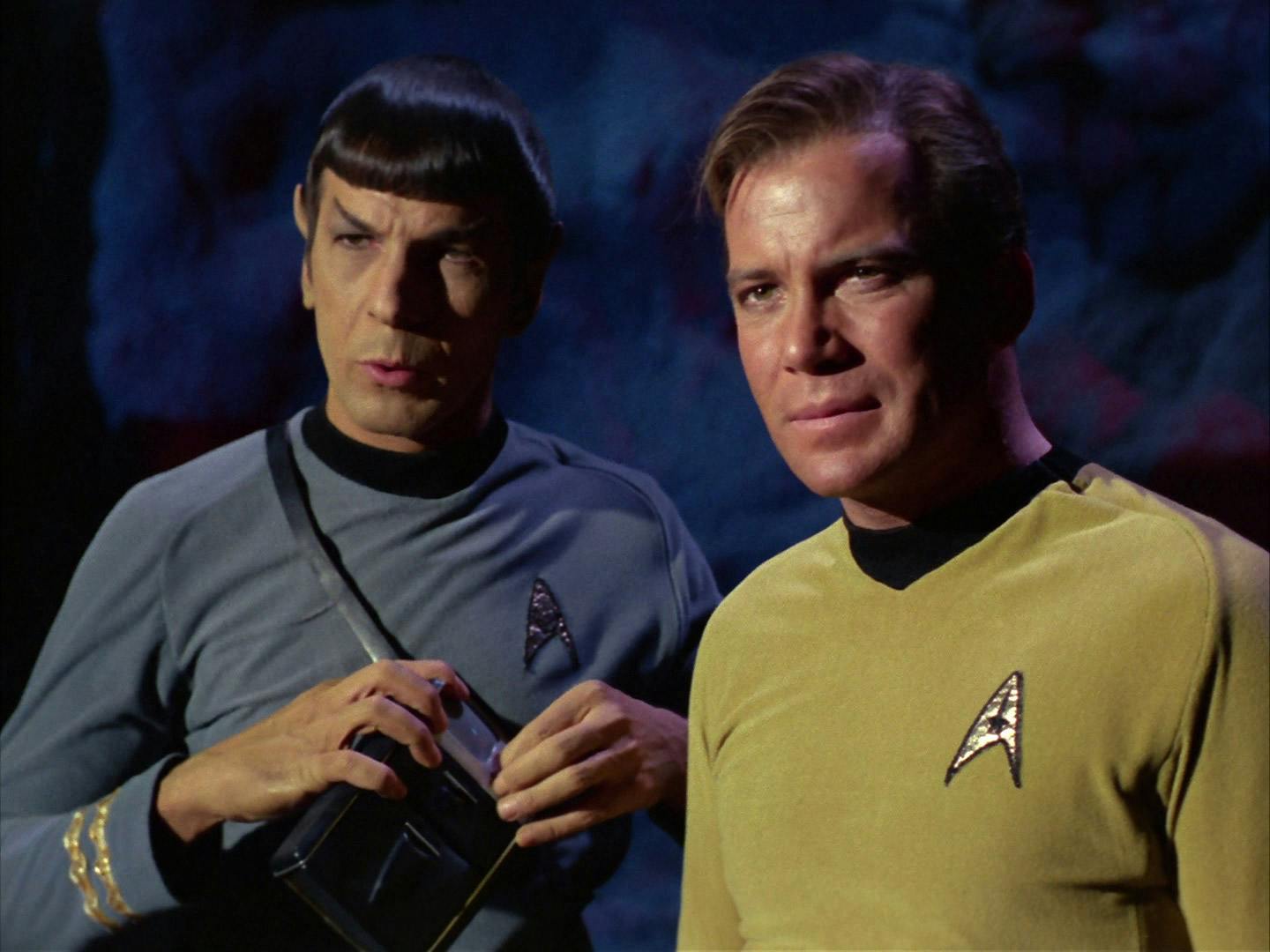
"The City on the Edge of Forever"
StarTrek.com
Perhaps the most legendary science officer in Starfleet history, Spock pioneered so many scientific advancements that selecting a single example represents an almost impossible undertaking. Always ready to conduct scans at his bridge station or break out his tricorder for a landing party, Spock cataloged all that crossed his path.
The Vulcan's diligence paid off on countless occasions, particularly in "." Having recorded Dr. McCoy's entry into the , Spock was able to determine the precise moment he and Captain Kirk needed to follow suit so that they could reverse the damage McCoy had done to the timeline. Furthermore, Spock utilized the relatively primitive components on hand in the 20th Century to construct a rudimentary mnemonic memory circuit which allowed them to deduce that Edith Keeler was the focal point of McCoy's temporal interference.
Mendon, Star Trek: The Next Generation
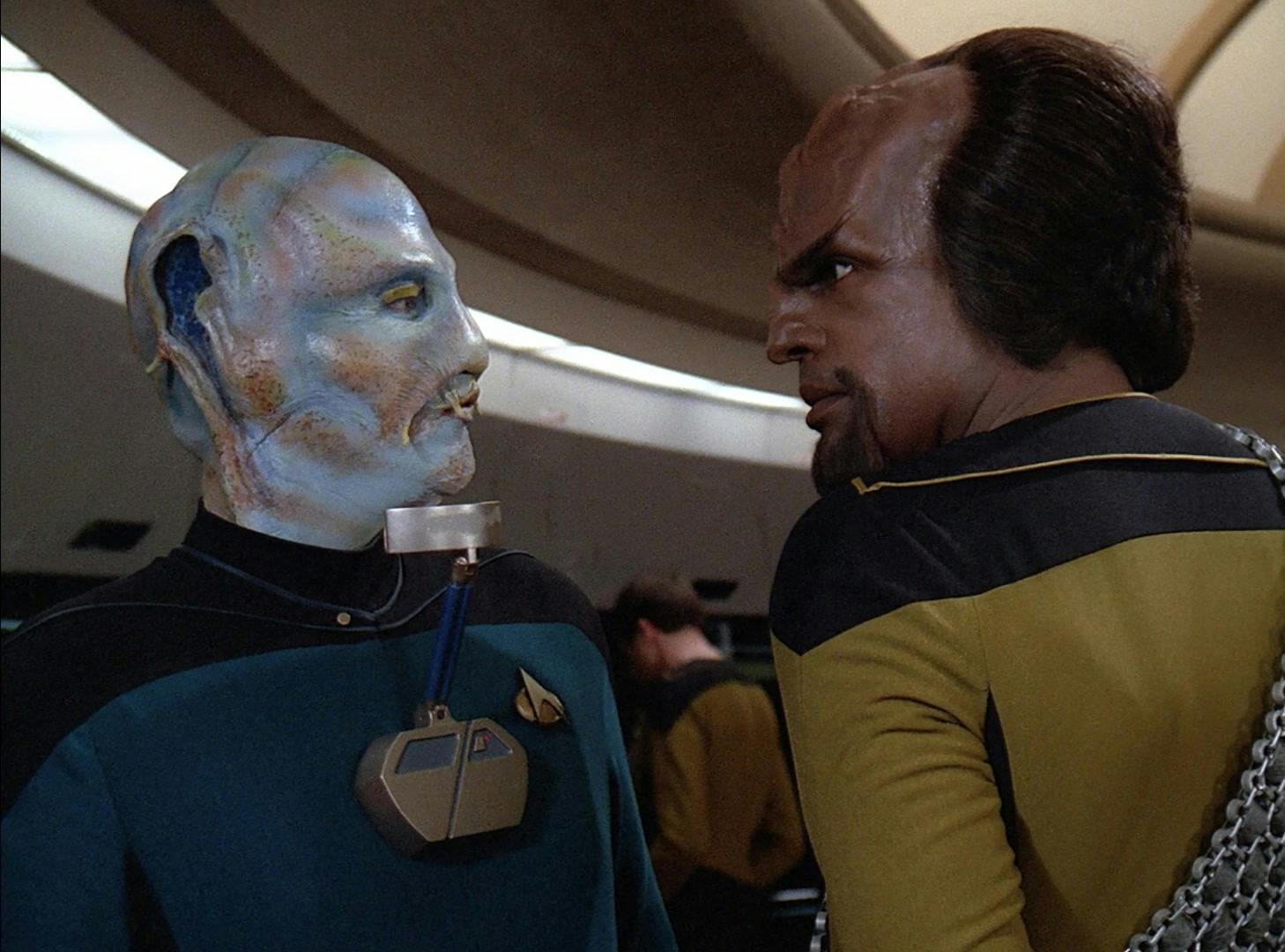
"A Matter of Honor"
StarTrek.com
A Benzite ensign participating in Starfleet's officer exchange program, Mendon demonstrated that scientists had a duty to liaise with their counterparts in other cultures. On a temporary assignment to the U.S.S. Enterprise-D's aft science station in "," Mendon drew the ire of his colleagues, Lieutenant Worf in particular, with his general inquisitiveness and a desire to report his observations directly to Captain Picard.
Adhering to Benzite protocol and waiting to report an anomalous reading he observed on a Klingon Bird-of-Prey's hull nearly yielded a calamitous conflict between the Enterprise-D and the Klingon vessel, leaving Mendon to believe he had failed to learn and adapt to Starfleet procedures. Fortunately, the Benzite redeemed his mistake by formulating a strategy to remove the unknown organism from both ships' hulls.
Jadzia Dax, Star Trek: Deep Space Nine
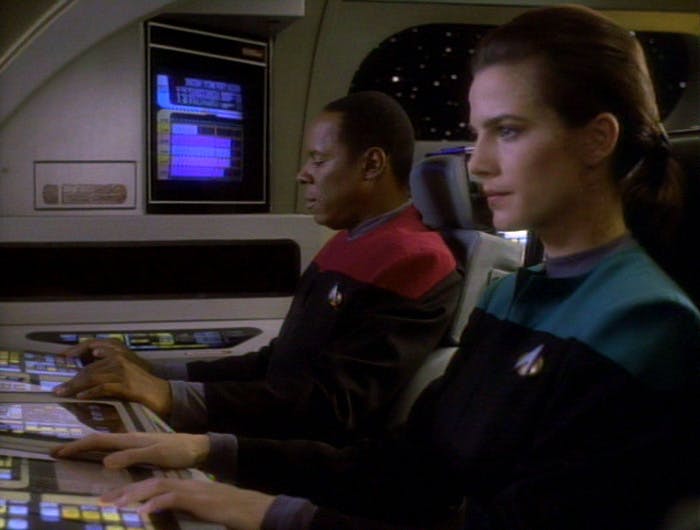
"Emissary"
StarTrek.com
In an investigation that would forever change the Alpha Quadrant, Jadzia Dax began examining a Bajoran orb as soon as she arrived at her new post aboard Deep Space 9. The joined Trill's research turned Commander Sisko's attention to the Denorios Belt, and the two piloted a runabout to take a closer look.
Their trip produced an astounding discovery of a stable wormhole — which the Bajorans referred to as the Celestial Temple — connecting the Bajoran system with the far reaches of the Gamma Quadrant. Though the find and led to a quadrant-wide war, it also expanded the sector's value for trade and exploration. Without the Trill science officer's input, the interstellar shortcut may have remained hidden for an untold number of years.
Data, Star Trek: The Next Generation
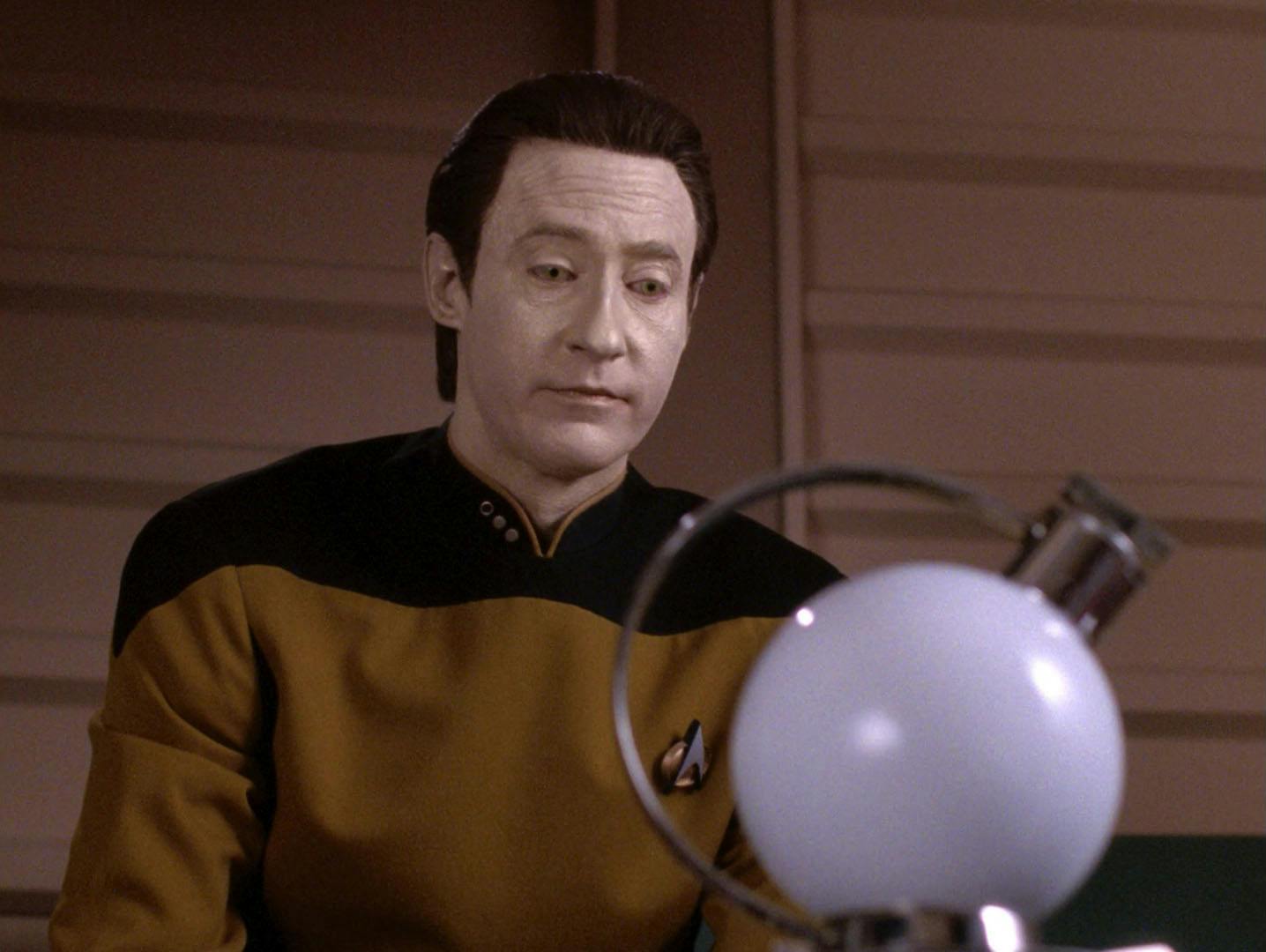
"Timescape"
StarTrek.com
While listed as the U.S.S. Enterprise-D's Operations Manager in the crew manifest displayed in "," Data regularly traded his post at Ops for one of the bridge's aft science stations. Whether conducting scans, evaluating information, or coordinating with Chief Engineer Geordi La Forge, Data displayed his scientific acumen on numerous occasions.
Guided by his own curiosity about humanity's perception of the passage of time in "," Data did what any reputable scientist would do and opted to further his understanding of the subject by testing the aphorism that a watched pot never boils. The android boiled the same amount of water in a kettle over and over again without any newsworthy realizations, but Commander Riker's recommendation that he boil it with his internal chronometer turned off gave him a fresh take on his research. While Data's experiment was a simple one, it highlighted the observational skills necessary for scientific work.
Ensign Taitt, Star Trek: The Next Generation
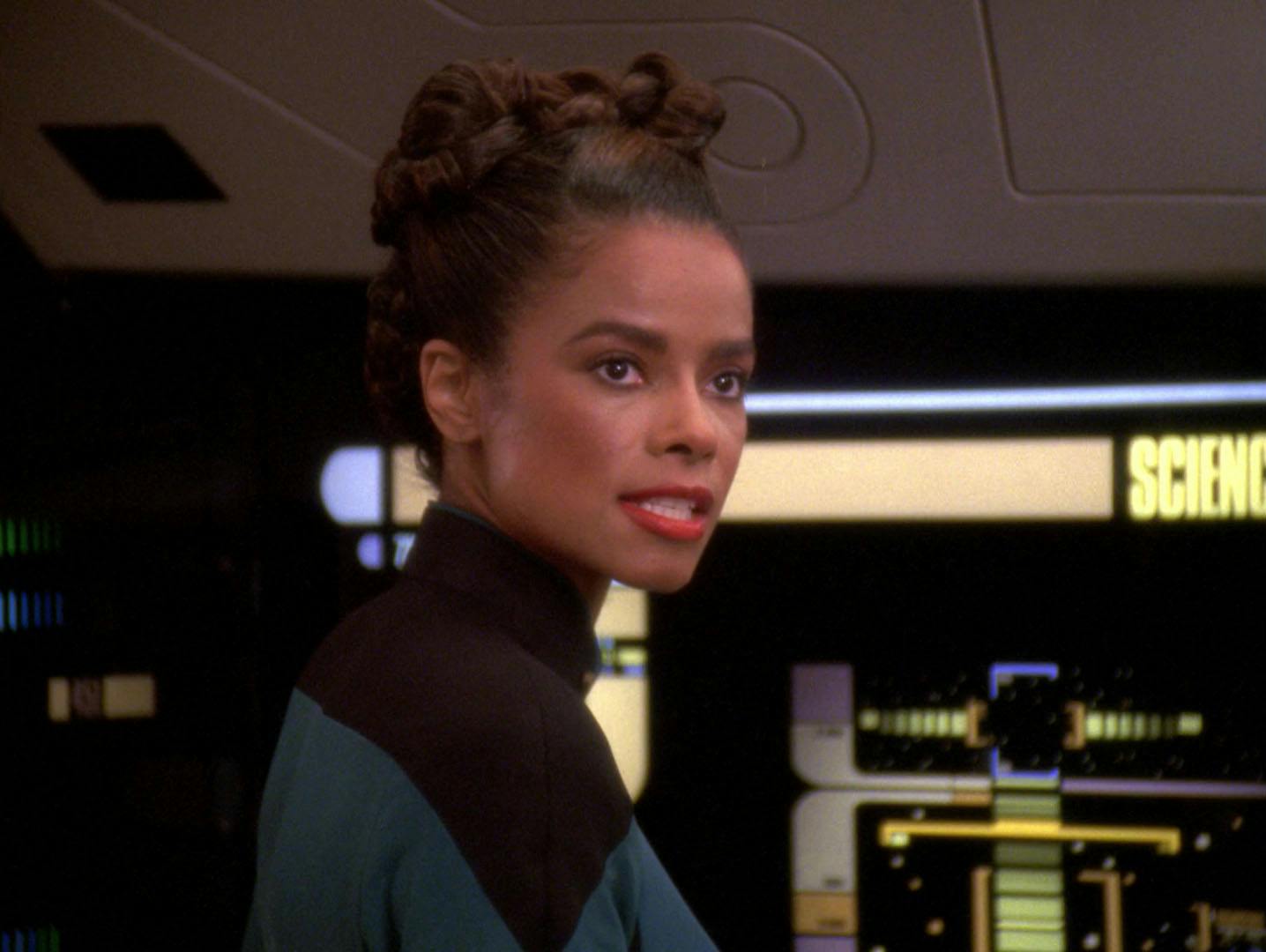
"Descent, Part II"
StarTrek.com
With of a skeleton crew aboard the Enterprise-D, Ensign Taitt was enlisted to act as the ship's tactical officer in a clash with the vessel operated by Lore's renegade Borg drones in "."
After being relieved by Lieutenant Barnaby, Taitt remained behind to crew the aft science station for the acting captain. Crusher ordered the Enterprise-D to be concealed in a star's corona, but it was Taitt who advocated for a plan to induce a solar fusion eruption that would destroy their opponent. Backed by Crusher, Taitt overcame Barnaby's doubts and successfully calculated the correct location to target, wiping out the Borg ship and allowing the Enterprise-D to return for the handful of officers who had been left behind at Lore's planetside facility.
Seven of Nine, Star Trek: Voyager
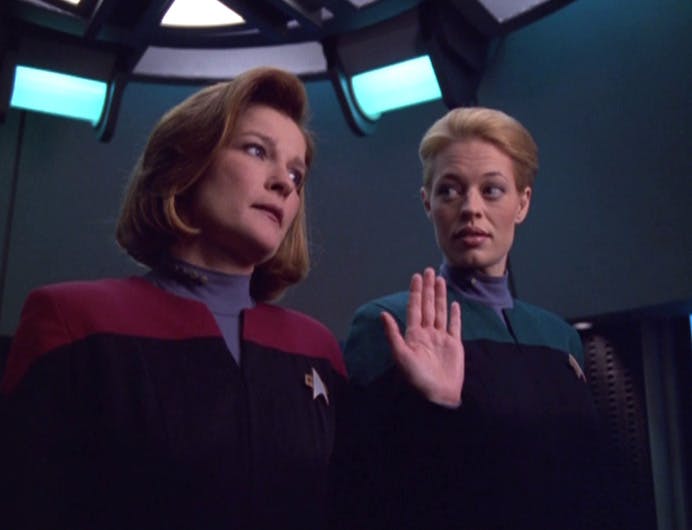
"Relativity"
StarTrek.com
Long before she became the captain of the U.S.S. Enterprise-G, Seven of Nine donned a Starfleet sciences division uniform to travel through time on behalf of a 29th-Century Federation timeship in "."
Of course, Seven was merely impersonating a science officer, but her accumulated knowledge from her decades in the Borg Collective made her eminently qualified to inhabit the job. Infiltrating the U.S.S. Voyager in a period prior to its maiden voyage, Seven posed as an ensign assigned to realign the vessel's EPS manifolds so that she could foil a temporal saboteur's effort to destroy Captain Janeway's command. The mission experienced its fair share of twists and turns, but Seven — with a little assistance from Janeway herself — triumphed and ensured that Voyager would survive to fight another day.





